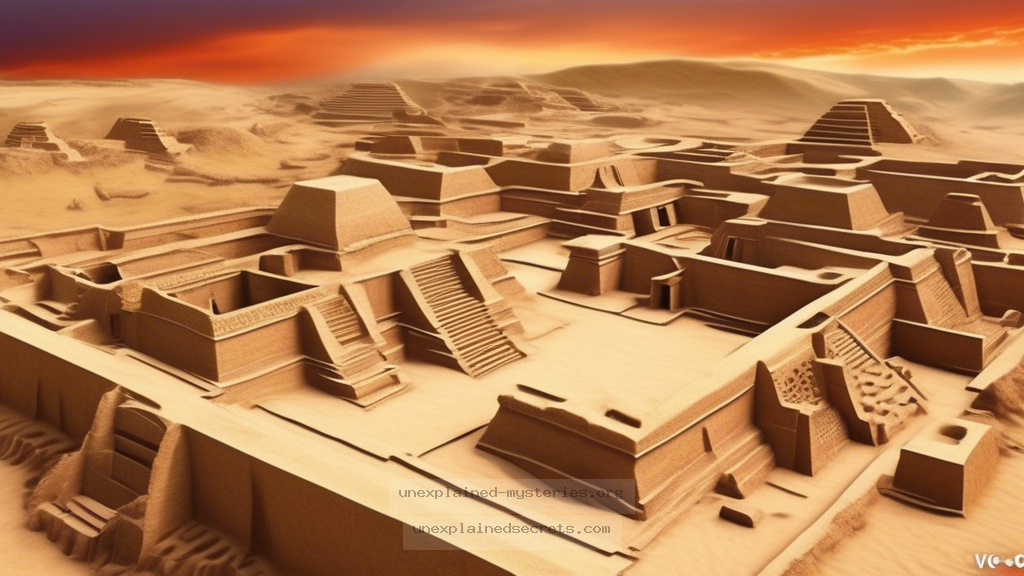What Happened to the Indus Valley Civilization: The Mystery of Its Sudden Disappearance?
What Happened to the Indus Valley Civilization: The Mystery of Its Sudden Disappearance?
The Indus Valley Civilization (IVC), one of the world’s earliest urban cultures, flourished between 3300 BCE and 1300 BCE, covering parts of modern-day Pakistan and northwest India. Its sophisticated cities like Harappa and Mohenjo-Daro boasted advanced drainage systems, standardized weights, and intricate trade networks. Yet, despite its remarkable achievements, this civilization vanished around 1900 BCE, leaving historians and archaeologists puzzled. What caused the sudden decline of such a developed society? This question is not just about the past; it holds implications for understanding how civilizations rise and fall, and it challenges our perceptions of human resilience and adaptability. In this post, we will explore various theories, historical accounts, and ongoing debates surrounding the mysterious disappearance of the Indus Valley Civilization.
Historical Context: The Rise of the Indus Valley Civilization
The Indus Valley Civilization emerged around 3300 BCE, marking the beginning of a complex society characterized by urban planning, architecture, and trade. The civilization reached its zenith between 2600 BCE and 1900 BCE, with cities constructed on a grid pattern, fortified structures, and advanced drainage systems. The people of the IVC engaged in agriculture, domesticated animals, and traded with neighboring regions, including Mesopotamia and Persia, indicating a vibrant economic environment. The script used by the civilization, known as the Indus script, remains undeciphered, adding to the enigma surrounding their culture and eventual decline.
Core Theories Behind the Disappearance
Several theories have been proposed to explain the sudden decline of the IVC. Among the most discussed are environmental changes, economic decline, and invasion or conflict.
- Environmental Changes: One of the leading theories suggests climate change led to a significant drying of the region. Evidence shows shifts in monsoon patterns, which could have caused agricultural collapse.
- Economic Decline: The IVC was heavily reliant on trade. Disruptions in trade routes, possibly due to changes in the environment or competition from other emerging civilizations, might have led to economic instability.
- Invasion or Conflict: Some archaeologists propose that invasions by Indo-Aryan peoples or internal conflicts could have contributed to the civilization’s decline.
Environmental Changes: The Role of Climate
The theory of environmental change is compelling, especially given the evidence of prolonged droughts in the region. Research indicates that around 2000 BCE, the Indian subcontinent experienced significant climatic shifts, leading to reduced monsoon rains. This would have severely impacted agriculture, which was the backbone of the IVC economy.
Recent studies involving sediment core samples from various lakes in the region show distinct periods of aridity, correlating with the decline of the IVC. The loss of reliable water sources would have led to food shortages, forcing populations to migrate in search of more fertile lands. This theory aligns with the archaeological record, which shows a gradual abandonment of major urban centers around this time.
Economic Implications: Trade and Resource Management
The Indus Valley Civilization was renowned for its trade networks, which connected it to distant regions, including Mesopotamia. The decline in trade due to climate change or competition could have led to economic collapse. Evidence suggests that by 1900 BCE, the intricately designed seals used for trade became less common, indicating a disruption in trade practices.
The IVC’s agricultural practices were predominantly dependent on the fertile floodplains of the Indus River. As these resources diminished, the economic viability of urban centers waned. The cities that once thrived on trade and agriculture began to show signs of decline, such as decreased population density and the abandonment of sophisticated urban planning.
Invasion Theories: Conflict and Migration
Theories regarding invasion or conflict stem from the idea that external forces or internal strife could have played significant roles in the civilization’s decline. The arrival of Indo-Aryan peoples around 1500 BCE is often cited as a factor contributing to the IVC’s fall. Archaeological findings indicate a shift in cultural artifacts and practices, suggesting a possible cultural takeover or integration.
Furthermore, the lack of evidence for large-scale warfare in the archaeological record raises questions about the nature of these supposed invasions. Some scholars argue that rather than outright conflict, there might have been a gradual assimilation of cultures, leading to the transformation of the IVC into new social structures.
Alternative Perspectives: The Complexity of Decline
While environmental, economic, and invasion theories are prevalent, some researchers advocate for a more nuanced understanding of the IVC’s decline. They argue that rather than a singular cause, a combination of factors—including social upheaval, climate change, and shifting trade routes—may have collectively contributed to the civilization’s downfall.
Moreover, some evidence suggests that while major urban centers were abandoned, smaller communities persisted, indicating that the civilization did not disappear entirely but rather transformed into new forms of societal organization. This perspective encourages a broader view of collapse, recognizing resilience in the face of adversity.
Common Misconceptions About the Indus Valley Civilization
Several misconceptions about the IVC exist, which can obscure our understanding of its history and decline:
- Misconception 1: The IVC was a homogenous society. In reality, it was diverse, with variations in culture, language, and practices across different regions.
- Misconception 2: The civilization was abruptly destroyed by war. While conflict may have played a role, evidence suggests a gradual decline rather than a sudden collapse.
- Misconception 3: The people completely vanished. In fact, many scholars believe that remnants of the IVC’s culture persisted and evolved into later societies.
Best Practices for Investigation and Study
Studying ancient civilizations like the IVC requires a multifaceted approach. Here are some best practices for researchers and enthusiasts alike:
- Interdisciplinary Collaboration: Combining insights from archaeology, anthropology, environmental science, and history can provide a more comprehensive understanding.
- Field Studies: Engaging in archaeological digs and site surveys can yield new findings that challenge existing theories.
- Technological Advancements: Utilizing modern technology, such as satellite imagery and ground-penetrating radar, can uncover hidden structures and patterns in ancient urban planning.
Future Developments: Ongoing Research and Discoveries
The study of the Indus Valley Civilization is far from complete. Ongoing excavations and research continue to shed light on this enigmatic culture. Recent discoveries in areas like Ganweriwala and the potential deciphering of the Indus script could revolutionize our understanding of the civilization.
Furthermore, climate studies are increasingly crucial in contextualizing the environmental conditions faced by the IVC. As climate change becomes a pressing global issue, learning from past civilizations can provide valuable insights into resilience in the face of environmental challenges.
Conclusion: Unraveling the Mystery of the Indus Valley Civilization
The disappearance of the Indus Valley Civilization remains one of history’s great mysteries. While theories concerning environmental degradation, economic decline, and conflict provide frameworks for understanding this phenomenon, it is crucial to recognize the complexity of ancient societies. Rather than seeking a singular explanation, embracing the interplay of factors can lead to a richer understanding of how civilizations flourish and falter.
The IVC teaches us about adaptability, resilience, and the intricate tapestry of human history. As research continues, we may yet uncover new truths about this remarkable civilization and its enduring legacy in the annals of human development.
Other Articles
Recent Posts
- What Happened to Flight MH370? The Conspiracy Theories That Still Haunt Us
- What Secrets Lurk Within the Walls of the Infamous Trans-Allegheny Lunatic Asylum?
- What Evidence Supports the Existence of Bigfoot in the Pacific Northwest?
- What Happened to the Indus Valley Civilization? Unraveling the Mysteries of Ancient Urban Life
- Can Telepathy Be Scientifically Proven Through Laboratory Evidence?







